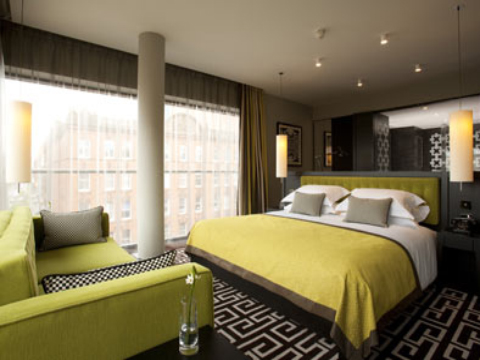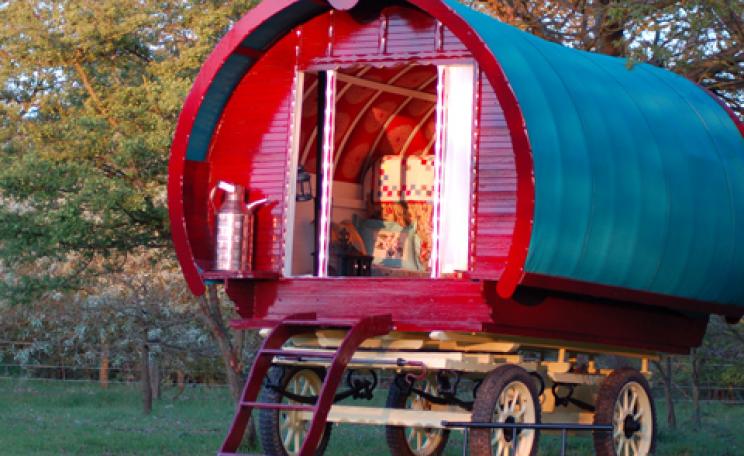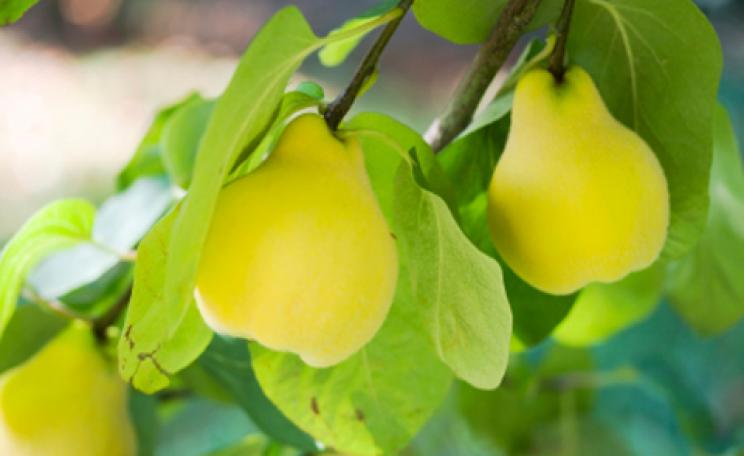Perched on the bank of the River Lagan at the western end of the Belfast Lough, Northern Ireland’s capital city has undergone a renaissance in recent years. Once better known for its presence on the front pages, the city is now making a splash in the travel section. That’s not to say that all evidence of its long and sometimes troubled past has been obliterated – far from it - but Belfast is without doubt an interesting place to be. And it isn’t just the city centre that’s interesting: the surrounding lush, green countryside more than lives up to its emerald reputation, with a host of places to get away for a long, relaxing stroll. Better still, Belfast’s sights are just a short ferry trip away, cutting out the need to fly. But the real reason to get to know Belfast is the people, who are ever ready with a quip, a joke or some friendly advice. It’s this, in part, that has won its night scene plaudits from the likes of Trip Advisor.
But great parties aren’t the only thing that Belfast has to offer. In a report released by investment services company, Mercer, last summer, Belfast was voted the second most eco-friendly city in the UK, just behind Edinburgh and well ahead of London. From green hotels to local food and cultural attractions galore, Belfast has plenty for the ethical traveller to love.
A relatively small city with a population of just 276,459, Belfast’s diminutive size makes getting around very easy indeed. The main retail area around the Victoria Square Shopping Centre is a short walk from the neo-classical City Hall, while the museum and the botanical gardens are 20 minutes away by bike.  Next to the imposing Queen’s University, the Ulster Museum is great for getting to grips with local history, featuring displays covering everything from the Spanish Armada to the Titanic and the Troubles. It’s also got a natural history floor complete with a precariously-perched Triceratops skeleton and some stuffed examples of the local fauna. But barring a trip into the countryside, the best way to see the Northern Irish flora is to head outside into the gorgeous Botanic Gardens. As urban green spaces go, Belfast’s Botanic Gardens has to be one of the best, with its maze of walkways, period glasshouses and crocus-covered lawns. It’s incredibly pretty and perfect for a walk or a leisurely picnic.
Next to the imposing Queen’s University, the Ulster Museum is great for getting to grips with local history, featuring displays covering everything from the Spanish Armada to the Titanic and the Troubles. It’s also got a natural history floor complete with a precariously-perched Triceratops skeleton and some stuffed examples of the local fauna. But barring a trip into the countryside, the best way to see the Northern Irish flora is to head outside into the gorgeous Botanic Gardens. As urban green spaces go, Belfast’s Botanic Gardens has to be one of the best, with its maze of walkways, period glasshouses and crocus-covered lawns. It’s incredibly pretty and perfect for a walk or a leisurely picnic.
Belfast might be surrounded by greenery but the skyline has a distinctly industrial feel. From the towering yellow cranes that dominate the harbour to the grand neo-classical guild buildings and City Hall in the centre of town, the city’s past as a linen-making and shipbuilding centre is plain to see. While Harland & Wolff, builder of the Titanic and her sister ships, the Olympic and the Britannic, has long gone, an artisan linen industry still thrives, and along with Atlantic sea salt, local linen is one of Belfast’s must-buys. Ultra-soft and of superior quality, one of your first stops should be at Avoca, a pretty little boutique on George Street. Beginning life as a linen specialist, it has since branched out to chintzy homeware and luxury bath products but still sells some of the best local cloth around. Avoca also does a neat line in locally woven Irish wool, including brightly coloured blankets, which are perfect for styling up your summer picnics. It’s also close to the Victoria Square Shopping Centre, a huge new shopping mall that has cornered the market in high street brands. But while Topshop and co aren’t particularly compelling reasons to go, there's another incentive for a visit to Victoria Square and he has a name: Gerry.
 As well as shops, the shopping centre has an enormous eye-catching glass dome, which does double duty as a skylight and vantage point for a bird’s eye view of Belfast. Manning the lookout was Gerry, a local charmer and a man who really knows his city. Did you know, for example, that Jonathan Swift’s inspiration for Gulliver’s Travels came from the Belfast view? No? Then take a closer look at some of the hillside rock formations, which includes one that looks uncannily like a giant human face in profile. Any idea what the locals call Harland & Wolf’s two enormous yellow cranes? That’d be Samson and Goliath. As a way of seeing the city without exerting too much effort, it’s brilliant, so not to be missed.
As well as shops, the shopping centre has an enormous eye-catching glass dome, which does double duty as a skylight and vantage point for a bird’s eye view of Belfast. Manning the lookout was Gerry, a local charmer and a man who really knows his city. Did you know, for example, that Jonathan Swift’s inspiration for Gulliver’s Travels came from the Belfast view? No? Then take a closer look at some of the hillside rock formations, which includes one that looks uncannily like a giant human face in profile. Any idea what the locals call Harland & Wolf’s two enormous yellow cranes? That’d be Samson and Goliath. As a way of seeing the city without exerting too much effort, it’s brilliant, so not to be missed.
Equally dazzling is Belfast’s nightlife, which has a deservedly good reputation thanks to the sparkly charm of the locals and the plethora of excellent places to eat, many of which specialise in local, organic fare. One of the best is James Street South, which does a good line in modern British cooking, including some gloriously gooey desserts such as the gingerbread with amaretto mousse and the white chocolate crème brulee.  Also worth a visit is Nick’s Warehouse with its jolly atmosphere, Gulliver-sized portions and excellent wine list, while Shu on the Lisburn Road, is the perfect alternative to the museum’s less-than-stellar canteen. Pick of the bunch though, is the afternoon tea at the Merchant; the eating of which is about as blissful a way to spend a Sunday afternoon as could possibly be imagined. Featuring a towering silver platter crammed with delicate sandwiches, scones smothered in cream and jam, and what are quite possibly the best lemon macaroons in the world; afternoon tea - Merchant style - is a real treat. Better still, all the teas and coffees available are fair trade and organic, up to and including speciality varieties such as the white and jasmine teas. Less rarefied but a lot livelier, is the nearby Spaniard; a rum bar located across the road from the Merchant. While Nick’s Warehouse and the Merchant are good for a civilised cocktail or two, the Spaniard is a real party bar and has a great, retro playlist.
Also worth a visit is Nick’s Warehouse with its jolly atmosphere, Gulliver-sized portions and excellent wine list, while Shu on the Lisburn Road, is the perfect alternative to the museum’s less-than-stellar canteen. Pick of the bunch though, is the afternoon tea at the Merchant; the eating of which is about as blissful a way to spend a Sunday afternoon as could possibly be imagined. Featuring a towering silver platter crammed with delicate sandwiches, scones smothered in cream and jam, and what are quite possibly the best lemon macaroons in the world; afternoon tea - Merchant style - is a real treat. Better still, all the teas and coffees available are fair trade and organic, up to and including speciality varieties such as the white and jasmine teas. Less rarefied but a lot livelier, is the nearby Spaniard; a rum bar located across the road from the Merchant. While Nick’s Warehouse and the Merchant are good for a civilised cocktail or two, the Spaniard is a real party bar and has a great, retro playlist.
If you can make it out of bed the next day, head over to the historic St George’s Market for an early morning gander at the excellent local, artisan produce. From unusually shaped cheeses (including one shaped like the Giant’s Causeway) to organic, handmade beauty products, there really is something for everyone. Particularly handy is the little coffee stall, which sells brews in strengths ranging from ‘Red Eye’ to ‘Kick Start’. Kick Start packs a hefty punch. There are also plenty of places that sell the traditional local dish, the Ulster Fry. Not surprisingly, given the name, it’s a fry-up of epic proportions. Like the English version, it has bacon, eggs, sausages and black pudding but includes a few extras like white pudding, soda farl and potato bread. It’s seriously calorific but really, really good, especially when you’ve got an alcohol-induced headache to contend with.
 Luckily for us, the day before had been spent whizzing around Belfast on two wheels with Gerry (a different one) of Belfast Bike Tours, whose cycle tour of Belfast could easily double up as a work out. He took us to George Best’s house, which provided some sporty inspiration, before taking us across town to the dry dock where the Titanic was built. Interestingly, the tour also addressed some of Belfast’s troubled recent history, taking in a Protestant area bedecked with Union Jacks and the sort of paramilitary graffiti familiar from front pages during the Troubles. It’s easy to forget when immersed in Belfast’s wonderful city centre, shops, restaurants and museums that the Good Friday agreement was only reached a decade ago. Yet the city doesn’t attempt to hide its past, as the excellent display at the Belfast Museum proved. But for the occasional physical reminder such as the scarred surface of the Ormeau Road, you’d be hard pressed to recognise the city that once featured so regularly in news reports. Once the UK’s most troubled city, Belfast today presents a very different picture indeed.
Luckily for us, the day before had been spent whizzing around Belfast on two wheels with Gerry (a different one) of Belfast Bike Tours, whose cycle tour of Belfast could easily double up as a work out. He took us to George Best’s house, which provided some sporty inspiration, before taking us across town to the dry dock where the Titanic was built. Interestingly, the tour also addressed some of Belfast’s troubled recent history, taking in a Protestant area bedecked with Union Jacks and the sort of paramilitary graffiti familiar from front pages during the Troubles. It’s easy to forget when immersed in Belfast’s wonderful city centre, shops, restaurants and museums that the Good Friday agreement was only reached a decade ago. Yet the city doesn’t attempt to hide its past, as the excellent display at the Belfast Museum proved. But for the occasional physical reminder such as the scarred surface of the Ormeau Road, you’d be hard pressed to recognise the city that once featured so regularly in news reports. Once the UK’s most troubled city, Belfast today presents a very different picture indeed.
Need to Know:
 Sleep: The greenest pick is the Fitzwilliam; a boutique hotel on Great Victoria Street which has made saving the environment a central part of its operations. Initiatives include making use of recycled rainwater, minimising food waste and using only recycled, organic and fair trade products. The restaurant, Menu by Kevin Thornton, only serves locally produced food.
Sleep: The greenest pick is the Fitzwilliam; a boutique hotel on Great Victoria Street which has made saving the environment a central part of its operations. Initiatives include making use of recycled rainwater, minimising food waste and using only recycled, organic and fair trade products. The restaurant, Menu by Kevin Thornton, only serves locally produced food.
 Eat: As well as James Street South, Shu and Nick’s Warehouse, try Avoca’s cafe, which is perfect for a light lunch, or head to Bourbon for local food with flair in baroque surroundings. Must-try foods include the local soda bread, the Ulster fry and champ – potato mashed with leeks, cream and butter. James Street South does the best version. If you’d rather make a picnic, head to St George’s Market for fresh, local produce.
Eat: As well as James Street South, Shu and Nick’s Warehouse, try Avoca’s cafe, which is perfect for a light lunch, or head to Bourbon for local food with flair in baroque surroundings. Must-try foods include the local soda bread, the Ulster fry and champ – potato mashed with leeks, cream and butter. James Street South does the best version. If you’d rather make a picnic, head to St George’s Market for fresh, local produce.
 Getting Around: Belfast’s small size makes walking the easiest way to traverse the centre, with the main shopping district and City Hall in close proximity to each other. There’s an excellent bus service running from the city centre out to the shops and attractions close to Queen’s University and Lisburn Road, while bikes can be rented from McConvey Cycles Bike Hire on the Ormeau Road for £15 per day.
Getting Around: Belfast’s small size makes walking the easiest way to traverse the centre, with the main shopping district and City Hall in close proximity to each other. There’s an excellent bus service running from the city centre out to the shops and attractions close to Queen’s University and Lisburn Road, while bikes can be rented from McConvey Cycles Bike Hire on the Ormeau Road for £15 per day.
Find out more: www.discoverireland.com
| READ MORE... | |
 |
GREEN LIVING Copenhagen: Europe's coolest green city Cutting edge architecture, miles of cycle routes and green spaces galore have made the Danish capital a hotspot for green travellers. Ruth Styles packed her bags for a weekend in Europe’s greenest capital city |
 |
GREEN LIVING Top 10…Euro cities to cycle Want to see a new city and get fit at the same time? Then try doing it by bike... |
 |
GREEN LIVING Top 10…Eco-friendly half term breaks Try something new during the half term break, whether it’s wolf tracking in Sweden or surfing in Wales. Whatever your budget, likes or dislikes, we’ve got an eco-friendly family trip for you |
 |
GREEN LIVING Green Weekending: Boot and Shoe Cottage County Durham might not have Rome’s lovely weather but a weekend break at Boot and Shoe cottage has more than enough charm to make up for any lack of sunshine |
 |
GREEN LIVING On the bear trail: eco-tourism in Slovakia Slovakian mountains provide the perfect backdrop for families who want to try their collective hand at conservation |








